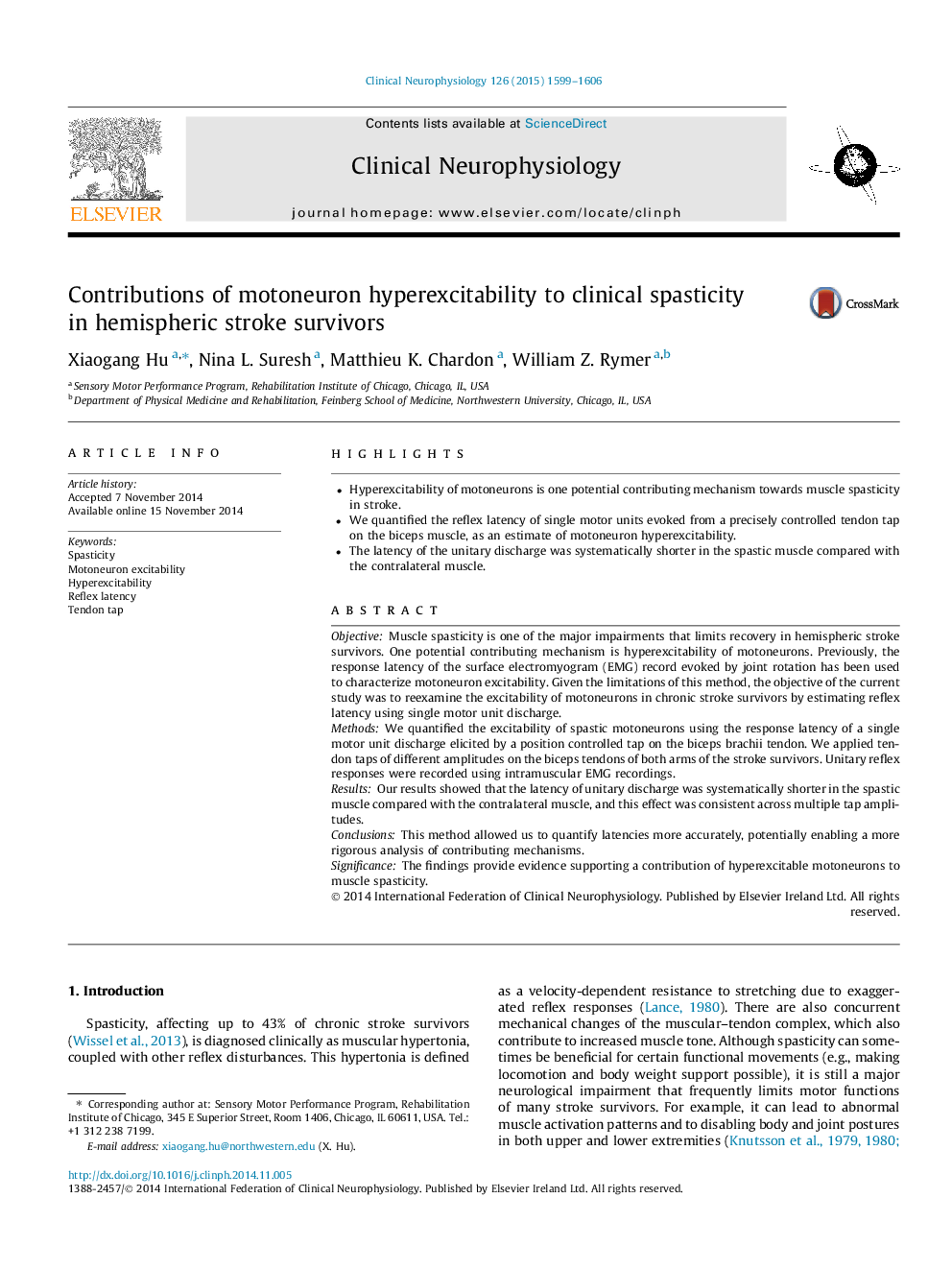| Article ID | Journal | Published Year | Pages | File Type |
|---|---|---|---|---|
| 3042561 | Clinical Neurophysiology | 2015 | 8 Pages |
•Hyperexcitability of motoneurons is one potential contributing mechanism towards muscle spasticity in stroke.•We quantified the reflex latency of single motor units evoked from a precisely controlled tendon tap on the biceps muscle, as an estimate of motoneuron hyperexcitability.•The latency of the unitary discharge was systematically shorter in the spastic muscle compared with the contralateral muscle.
ObjectiveMuscle spasticity is one of the major impairments that limits recovery in hemispheric stroke survivors. One potential contributing mechanism is hyperexcitability of motoneurons. Previously, the response latency of the surface electromyogram (EMG) record evoked by joint rotation has been used to characterize motoneuron excitability. Given the limitations of this method, the objective of the current study was to reexamine the excitability of motoneurons in chronic stroke survivors by estimating reflex latency using single motor unit discharge.MethodsWe quantified the excitability of spastic motoneurons using the response latency of a single motor unit discharge elicited by a position controlled tap on the biceps brachii tendon. We applied tendon taps of different amplitudes on the biceps tendons of both arms of the stroke survivors. Unitary reflex responses were recorded using intramuscular EMG recordings.ResultsOur results showed that the latency of unitary discharge was systematically shorter in the spastic muscle compared with the contralateral muscle, and this effect was consistent across multiple tap amplitudes.ConclusionsThis method allowed us to quantify latencies more accurately, potentially enabling a more rigorous analysis of contributing mechanisms.SignificanceThe findings provide evidence supporting a contribution of hyperexcitable motoneurons to muscle spasticity.
